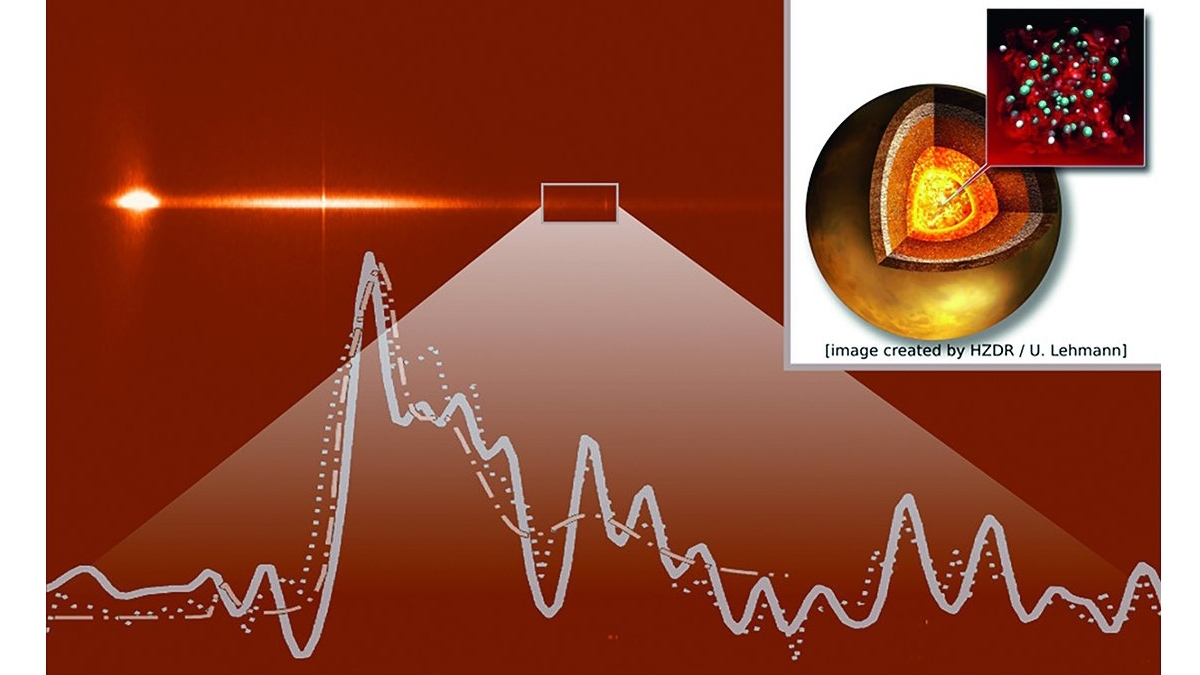Extreme conditions can be found at the center of planets: temperatures of many thousands of degrees prevail and the pressure is millions of times greater than atmospheric pressure. An international research team involving the Helmholtz-Zentrum Dresden-Rossendorf (HZDR) has now succeeded in investigating the chemical properties of the important element carbon under the extreme conditions of so-called "warm dense matter", a transitional state between solid state and plasma, using the flashes of light from the world's most powerful X-ray laser.
The world's most powerful X-ray laser, the European XFEL in Hamburg, was used for this purpose. The extremely short and intense pulses generated by it were directed onto thin foils made of carbon (graphite or diamond), in which a small proportion of the X-ray flashes are scattered. These scattered flashes can reveal what kind of chemical bond the carbon atoms have formed with their environment. However, in order to generate the extreme conditions of warm dense matter, powerful laser flashes are still required to bring the carbon foils to high pressures and temperatures of up to several 100,000 degrees. This will be possible in a few months with the "Helmholtz International Beamline for Extreme Fields (HIBEF)". Applications range from studies of the Earth's core to complex reactions in gas giants and the simulation of comet impacts. In principle, new types of materials are also conceivable, such as those that enable superconductivity at room temperature.


